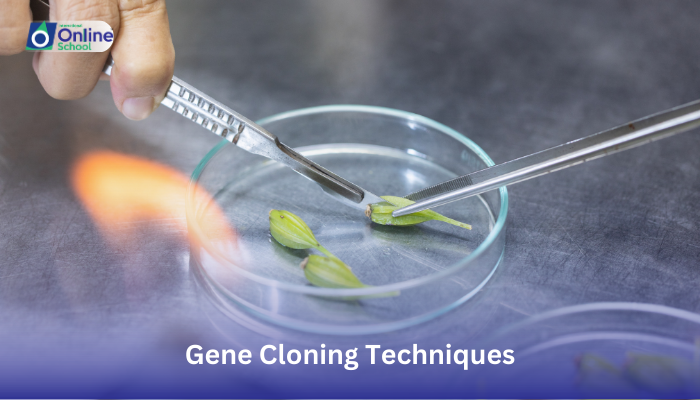
Learning Outcomes:
i. Describe the key tools and methods used in recombinant DNA technology for gene cloning.
ii. Explain the roles of restriction enzymes, vectors, and host cells in the gene cloning process.
iii. Differentiate between common gene cloning techniques like plasmid cloning and polymerase chain reaction (PCR).
iv. Appreciate the diverse applications of gene cloning techniques in research and medicine.
Introduction:
Imagine a workshop where scientists, like skilled artisans, manipulate the very fabric of life. This workshop is the realm of recombinant DNA technology, where gene cloning takes center stage. In this lesson, we delve into the tools and techniques used in this fascinating process, unraveling the secrets behind copying and manipulating genes for diverse purposes.
i. The Tools of the Craft: Essential Components of Gene Cloning:
Restriction enzymes: These molecular scissors cut DNA at specific sequences, allowing scientists to isolate the desired gene. Imagine tiny shears that can precisely clip out a single sentence from a book without damaging the rest.
Vectors: These DNA carriers, often plasmids from bacteria, provide a platform for inserting and replicating the isolated gene. Think of the vector as a blank page where the copied sentence can be pasted and multiplied.
Host cells: Bacteria are commonly used as host cells, serving as miniature factories that express the cloned gene and produce the desired protein. Imagine the host cell as a printing press, reading the instructions on the vector and translating them into a tangible product.
ii. The Techniques Unraveled: Diving into Specific Methods:
Plasmid cloning: This technique involves inserting the gene into a plasmid vector, which is then introduced into a bacterial host cell. The bacteria replicate, producing clones that all carry the desired gene. Imagine copying the sentence onto multiple blank pages and distributing them to different printing presses, each churning out identical copies of the original text.
Polymerase chain reaction (PCR): This technique uses enzymes to amplify a specific DNA sequence millions of times, creating a vast quantity of copies from a tiny sample. Imagine taking a single sentence and using a special machine to create millions of identical copies, ensuring the information is readily available for further analysis.
iii. Beyond the Techniques: Applications of Gene Cloning:
Gene cloning has revolutionized various fields:
Medicine: It can be used to produce insulin for diabetics, diagnose genetic diseases, and develop new vaccines. Imagine using gene clones to unlock the secrets of disease and create tools to heal and protect.
Agriculture: It can be used to create pest-resistant crops, improve crop yield, and develop food with enhanced nutritional value. Imagine fields teeming with healthier, more resilient plants, nourishing the world with greater abundance.
Biotechnology: It can be used to produce biofuels, industrial enzymes, and even environmentally friendly plastics. Imagine using gene clones to develop sustainable solutions for energy and resource needs, paving the way for a greener future.
Gene cloning techniques are powerful tools that allow us to manipulate the very building blocks of life. While their potential is immense, it's crucial to use them responsibly and ethically. By understanding the tools, methods, and applications of gene cloning, we can participate in informed discussions about its impact on society and ensure this technology serves humanity for the greater good.